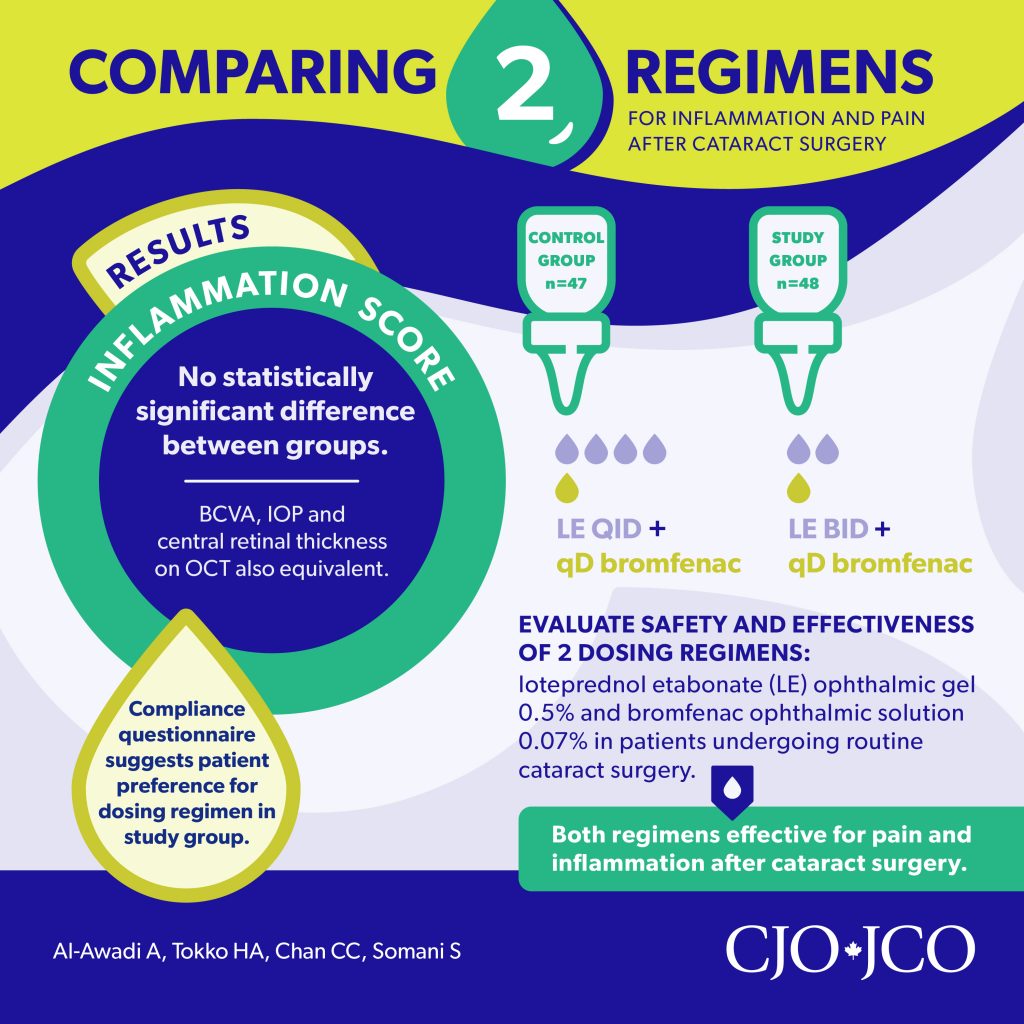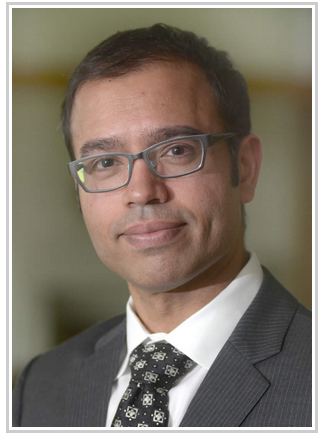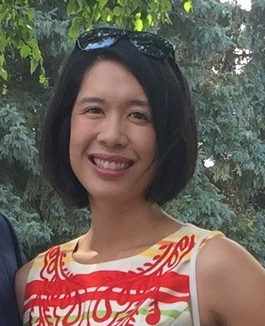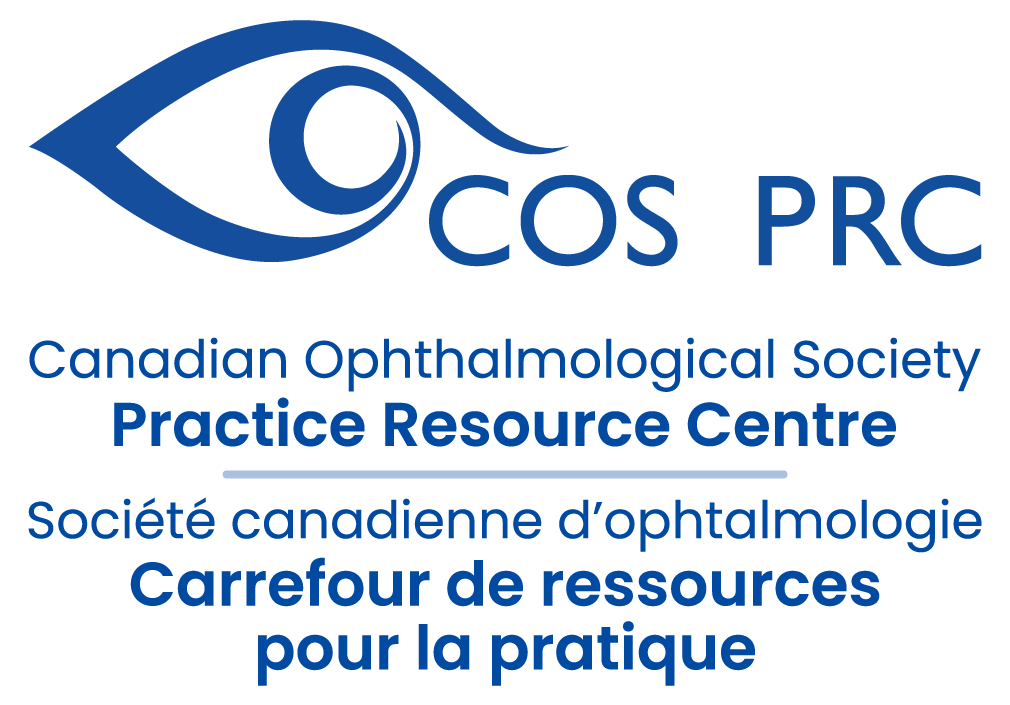Survey of reported eye injuries from handheld laser devices in Canada
Read the full article through the Canadian Journal of Ophthalmology website: Full Article
Authors
Sami S. Qutob, Katya P. Feder, Michelle O’Brien, Leonora Marro, James P. McNamee, David S. Michaud
Abstract
Background
Unprotected exposure to handheld lasers can cause temporary or permanent vision loss depending on the laser classification.
Objective
To evaluate the occurrence of, and details associated with, reported eye injuries resulting from handheld lasers.
Methods
A 14-item questionnaire developed by Health Canada was distributed by the Canadian Ophthalmological Society and the Canadian Association of Optometrists to their respective members.
Results
Questionnaire data were available from 909 respondents (263 ophthalmologists; 646 optometrists). Response rates were 23.1% and 12.7%, respectively. Validated data were available from 903 respondents, where 157 (17.4%) reported encountering at least 1 eye injury from a handheld laser. A total of 318 eye injuries were reported with an annual increase of 34.4% (95% CI 21.6%–48.7%, p < 0.0001) between 2013 and 2017. When respondents reported on only their most severe case, 77 (53.5%) reported vision loss that ranged from minor to severe, which persisted for more than 6 months in 42.9% of the cases. Another 59 (41.3%) noted the presence of retinal damage. The prevalence of eye injuries from handheld lasers was higher for males (82.5%) than females (14.0%), more frequent among those under the age of 50years, and occurred predominately as a result of exposure from another person (67.6%) versus self-induced (26.1%) (p < 0.0001).
Conclusions
Although this pilot study permits insight into the potential prevalence of injuries resulting from exposure to handheld laser devices in Canada, the results are not nationally representative. These findings support additional surveillance activities that may inform risk assessment and potential risk management strategies.
CJO’s Inaugural Visual Abstract
The CJO’s inaugural visual abstract provides a graphical summary of the following article from the June issue: Comparison of 2 regimens of loteprednol etabonate and bromfenac for cataract surgery.

The article is also featured in the CJO’s first Resident Perspectives digest, which highlights a handful of articles from each issue with summaries written by members of the CJO’s Resident Advisory Council. These summaries are written by residents for residents and focus on issues that are particularly relevant to learners here in Canada and beyond.
Clinical – Pathological Correlation in Ophthalmology
The MUHC-McGill University Ophthalmic Pathology Review Course brings an update of the non-neoplastic and neoplastic diseases of the eye and the ocular adnexa. The three-day course will review the most important ocular diseases in a clinical pathological manner. The course is designed to bring the pathological features to the clinical diagnosis and integrating the tissue morphology to the signs and symptoms of the patient.
Target Audience: Residents, fellows, and young physicians
National Eye Review Program
The 2019 one-day annual National Review Course will review highly pertinent pearls for less common conditions that are still encountered in our everyday comprehensive and subspecialty practices.
Target Audience
This is a course for expert ophthalmologists delivered by expert ophthalmologists.
CPD Credits
Continuing Professional Development (CPD), Faculty of Medicine, University of Toronto, is fully accredited by the Committee on Accreditation of Continuing Medical Education (CACME), a subcommittee of the Committee on Accreditation of Canadian Medical Schools (CACMS). This standard allows CPD to review and assess educational activities based on the criteria established by The College of Family Physicians of Canada and the Royal College of Physicians and Surgeons of Canada.
As a result of a reciprocal agreement between the Royal College of Physicians and Surgeons of Canada, The American Medical Association, and The European Union for Medical Specialties (EUMS), CPD is permitted to assign respective credits.
For more information or to register, visit the National Eye Review Program website.
The Doctor’s Life Podcast
The Doctor’s Life Podcast is a weekly podcast featuring discussions with fellow doctors and scientists on how to achieve success in clinical medicine and non-clinical careers while staying healthy in mind, body and spirit and balancing living a rich, purposeful life. Hosted by Physician Development Coach and Founder of the Physician Vitality Institute, Dianne Ansari-Winn, MD.
The Financially Intelligent Physician with Dr. David Norris and The Joy of Burnout with Dr. Dina Glouberman are two of many fascinating podcasts that delve into complex topics that impact physicians’ everyday lives. The podcast covers the basic tools that every doctor should know, from practice and business management to mental health and emotional well-being.
Message from the Editor-in-Chief
The Canadian Journal of Ophthalmology (CJO) is the official journal of the Canadian Ophthalmological Society (COS). While our focus is on the Canadian perspective, we know that key stakeholders across Canada and around the world are working collaboratively to develop innovative solutions to move forward our collective mission of excellence in patient care, vision science, education, and health care delivery. It is within this thriving innovative environment that I see the CJO as a fundamental matrix that provides a forum for discourse, debate, creativity, and the dissemination of ideas and ground-breaking research in ophthalmology and vision science.
Since beginning my tenure as Editor-in-Chief of the CJO in June 2018, we have put several new initiatives in place, including:
- Creating a new Health Economics section of the CJO.
- Creating the CJO Resident Advisory Council to engage residents from across the country.
- Developing a policy on industry involvement in manuscripts submitted to the CJO.
Along with these initiatives, we are planning to produce a few supplements over the next couple of years, including one on Physician Wellness. We are also excited about the Resident Advisory Council’s CJO Digest, which will launch in June. The Digest, which is created and driven by residents, will highlight several articles from each CJO issue, with a focus on how the article is relevant to Canadian residents.
The CJO has a strong foundation and a long and cherished history. As clinicians, educators, learners, vision scientists, and health care administrators, we must continue to lead the future of ophthalmology by producing, sharing, and discussing cutting-edge research of national and international significance. I invite each of you to actively participate and contribute to the CJO as an author, reviewer, reader, advocate for new ideas, and leader of new initiatives.

Varun Chaudhary, MD
Editor-in-Chief, CJO
Finessing your Retinopathy of Prematurity (ROP) Skills
Just recently, an ophthalmology resident that was nearing the end of their pediatrics rotation said to me, “All the ROP babies we have screened together have no ROP or ROP not requiring treatment. I’m afraid that when I go into practice I might not be confident enough to call Type I ROP. What should I do?”. Initially my first obvious answer was to recommend what I did in residency – see more patients together and continuing to review the ROP criteria and standard photos. However, I then recalled a great online ROP case-based training tool that had become available when I was in fellowship, Retinopathy of Prematurity: Case-Based Training, available through the American Academy of Ophthalmology website.
This interactive tool provides 20 cases of varying severity including a tutorial, if needed, to review how to diagnosis and when to treat ROP. Each case provides the birth weight, gestational age, postmenstrual age, six standard ROP imaging views for each eye, and selections for your specific diagnosis and follow-up. Although it may sound straightforward, some of the cases really get you thinking about whether they truly meet the criteria for treatment based on the Early Treatment of ROP (ETROP) study. Some of the cases are so challenging that at the recent ROP Update Conference – which is an accredited biennial meeting of ROP gurus and neonatologist that I also highly recommend – the exact same images and criteria were shown to the attendees and they were asked to respond resulting in varying diagnoses and management plans. As such, the training tool is great for residents, fellows, and any comprehensive, pediatric, or retina specialist performing ROP screenings who want to ensure their skills are up to date.
You do not need an AAO account if you would like to access the education module for pure learning purposes. However, if you are wanting the self-assessment credits for the activity you will need to be an active member of the AAO.
Retinopathy of Prematurity: Case-Based Training, available through the American Academy of Ophthalmology website.

Recommended by Dr. Christine Law
Christine Law, MD, FRCSC
Practice Resource Centre Committee Member
Straight from the Cutter’s Mouth: A Retina Podcast
I have a secret…I love listening to podcasts! There is something very relaxing to me about simply turning off a screen, slipping on some headphones and listening to someone tell a story. Whatever your interests may be, I would bet you that there is a podcast on it! I recently learned that you can also claim podcasts as a scanning activity under Section 2 MOC for 0.5 credit per podcast. Since claiming credits to listening to “Serial” or “Dr. Death” would probably raise some eyebrows at the Royal College, I decided to do a little digging for ophthalmology podcasts that I could get CME credits for.
A retina colleague of mine suggested “Straight from the Cutter’s Mouth: A Retina Podcast.” Through interviews and discussions with leading retina specialists, they cover a wide range of topics from practice management, career development, medical and surgical retina, and also have a regular journal club. You can access their podcasts from their main website, or through iTunes. You may find some episodes will be more or less relevant to you depending on your scope of practice.
Overall, I have found that it is pretty easy to scroll through the podcasts and get a sense of their relevance for me by their titles. I think anyone who practices surgical/medical retina or comprehensive ophthalmology will likely find a few episodes of interest. I recently listened to “Episode 64: Yag Laser for Floaters”, which was a great review of three papers recently published looking at the role of Yag Laser Vitreolysis in these cases. I probably would not have come across these papers otherwise.
So next time you are sitting in traffic on your way to work, why not play a podcast, learn something new and claim some MOC credits at the same time?
Recommended by Dr. Anu Mishra
Anu Mishra, MD, MSHPEd, FRCSC
Practice Resource Centre Committee Member
Neuro-Ophthalmology Virtual Education Library
The Neuro-Ophthalmology Virtual Education Library (NOVEL) has been one of my favorite educational resources as a resident and still continues to be one that I go back to as part of my general practice. Neuro-ophthalmology cases can sometimes be hiding amongst blurry vision and glaucoma suspect referrals. They somehow always seem to find a way to sneak into my clinics! I do find it helpful to refresh myself on neuro topics from time to time and for me a video is worth 1000 words. NOVEL is an amazing open access, repository of digital materials that may be used for education and research purposes. This is a great place to access images and videos for presentations, review key neuro-ophthalmology concepts and also as a place to submit interesting cases.
Last month I was responsible for organizing an introduction to ophthalmology workshop for a group of med 2 students, and I ended up using several clinical examination videos to help highlight key exam techniques such as the pupillary exam and extra ocular motility testing. One of the other great features is being able to access all the presentations from the Annual North America Neuro-Ophthalmology Society (NANOS) meetings through the site. I recently came across this nice series of presentations from the 2016 meeting, that reviews OCT use in neuro-ophthalmology.
Reviewing these videos could easily could be made into a Section 2 MOC Personal Learning Project which would give you 2 credits per hour.
Check out NOVEL today!
Recommended by Dr. Anu Mishra
Anu Mishra, M.D., MSHPEd, FRCSC
Practice Resource Centre Committee Member



